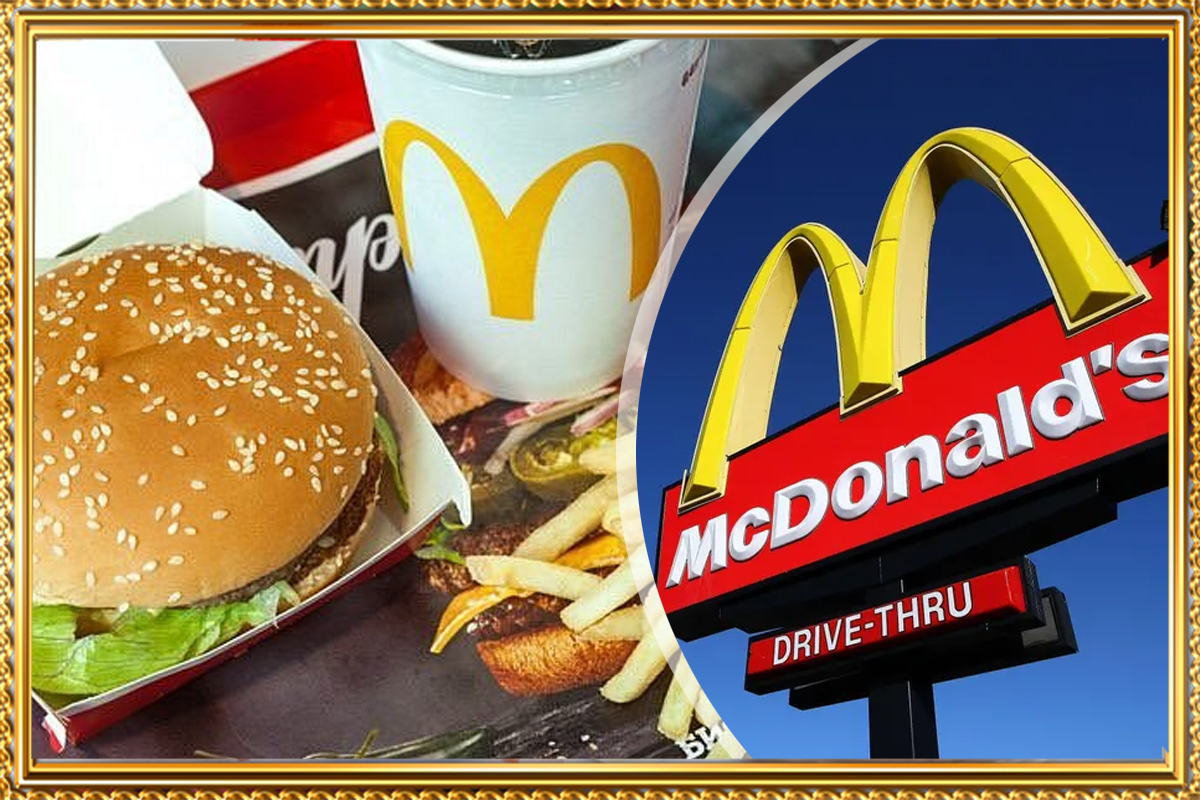- Home
- How McDonald’s Builds Its Menu and Sets Affordable Prices
How McDonald’s Builds Its Menu and Sets Affordable Prices

Discover how Wall Street influences McDonald’s operations, the factors behind its menu decisions, pricing strategies, biggest menu flops, and what competitors can learn
McDonald’s has long been an iconic name in the fast-food industry, captivating customers with its consistency, convenience, and menu innovations. However, behind the golden arches lies a complex interplay of business strategies influenced by market trends, customer preferences, and financial stakeholders like Wall Street. This blog delves into how McDonald’s navigates its menu evolution, pricing strategies, and operational decisions while addressing past challenges and future opportunities.
How McDonald’s Calculates Menu Prices
How Wall Street Influences McDonald’s Daily Operations and Menu Decisions
Notable Wall Street-Triggered Stock Drop
McDonald’s Biggest Menu Flop
Factors Behind Menu Decisions
McDonald’s Dollar Menu
Competitors’ Strategies During McDonald’s Struggles
Factors Affecting McDonald’s Global Success
Recent Innovations
Positive Aspects / Negative Aspects of McDonald’s Strategies
FAQs
CONCLUSION
How McDonald’s Calculates Menu Prices
McDonald’s pricing strategy balances affordability with profitability. Key factors include:
- Cost of Ingredients: Global sourcing and local pricing influence food costs.
- Competitor Pricing: McDonald’s monitors prices of rival fast-food chains to remain competitive.
- Customer Perception: Prices are adjusted to align with customer expectations of value.
- Economic Conditions: Inflation, wage changes, and local economic trends are considered.

How Wall Street Influences McDonald’s Daily Operations and Menu Decisions
Shareholder expectations for consistent growth and profitability often push the company to streamline costs, innovate, and maintain competitive pricing.
- Quarterly earnings reports, stock performance, and analyst feedback can directly impact decisions like introducing new menu items, promotional campaigns, or price adjustments.
- For instance, if Wall Street signals concerns about McDonald’s growth trajectory, the company might focus on introducing higher-margin products or limited-time offers to boost revenue quickly.
Notable Wall Street-Triggered Stock Drop
One of the most dramatic overnight stock drops for McDonald’s occurred when it missed Wall Street’s quarterly profit estimates. Contributing factors included a surprising drop in same-store sales, supply chain disruptions, and increased competition. These events underscored the importance of adapting quickly to market dynamics.
McDonald’s Biggest Menu Flop
The McDLT, introduced in the 1980s, is often regarded as McDonald’s biggest menu flop. The concept of separating hot and cold burger components to keep them fresh fell flat due to logistical challenges and customer indifference. However, it provided valuable lessons about operational feasibility and customer preferences.
- Reasons for Sales Drops and Missed Estimates: McDonald’s recent sales drop stemmed from several factors: • Growing competition in the fast-food sector. • Supply chain issues leading to inconsistent availability. • Rising food and labor costs affecting profitability.
Factors Behind Menu Decisions
McDonald’s considers several elements when deciding its menu offerings:
- Customer Preferences: Data-driven insights from sales trends and customer feedback.
- Nutritional Trends: Responding to demand for healthier options or plant-based meals.
- Market Testing: Trial runs in select locations before a full-scale launch.
McDonald’s Dollar Menu
As of now, McDonald’s dollar menu, often branded as the “$1 $2 $3 Dollar Menu,” includes affordable items like small fries, cheeseburgers, and McChicken sandwiches. These items cater to budget-conscious customers.
Competitors’ Strategies During McDonald’s Struggles
Competitors can capitalize on McDonald’s challenges by:
- Highlighting superior quality or unique menu offerings.
- Running aggressive promotions targeting McDonald’s customer base.
- Expanding delivery and digital ordering platforms.
Factors Affecting McDonald’s Global Success
- 1. Localization of Menu: McDonald’s thrives by tailoring its menu to local tastes, such as Teriyaki Burgers in Japan or McArabia in the Middle East, ensuring cultural relevance while maintaining its global brand identity.
- 2. Technology Integration: Investment in kiosks, mobile apps, and loyalty programs helps streamline ordering, improve customer engagement, and gather valuable consumer data. 3. Sustainability Initiatives: Efforts to reduce plastic waste (like paper straws and sustainable packaging) and commitments to eco-friendly practices enhance its brand image among environmentally conscious consumers.
- Challenges McDonald’s Faces: 1. Labor Shortages: Fast-food labor markets face high turnover rates, which can impact operations and customer experience.
- 2. Healthier Eating Trends: Growing demand for organic and clean eating options poses a challenge for McDonald’s traditional offerings.
- 3. Market Saturation: In established markets, competition and consumer fatigue present barriers to continued growth.
Recent Innovations
- 1. Plant-Based Offerings: Collaborations with Beyond Meat and Impossible Foods have introduced plant-based burgers, appealing to vegan and vegetarian demographics.
- 2. Digital-Only Locations: McDonald’s is experimenting with fully digital outlets focused on speed and efficiency, reducing reliance on in-store staff. 3. Expanded Delivery Services: Partnerships with delivery platforms like Uber Eats and DoorDash ensure convenience for a tech-savvy, home-based audience.
- The Role of Data in Menu Development: McDonald’s uses sophisticated data analytics to: 1. Track popular menu items and optimize offerings.}
- 2. Predict customer behavior during different seasons.
- 3. Adjust marketing strategies based on regional preferences.
Positive Aspects / Negative Aspects of McDonald’s Strategies
- Global Adaptability: Menu variations cater to diverse cultural preferences.
- Affordability: Options like the dollar menu ensure accessibility.
- Negative Aspects: Inconsistencies: Regional variations can dilute brand consistency.
- Health Concerns: Critics argue that many menu items are high in calories and fat.
- Dependency on Promotions: Heavy reliance on limited-time deals can affect regular menu sales.
FAQs
- What is McDonald’s menu like in Hawaii? McDonald’s in Hawaii features local-inspired dishes like Spam breakfast platters and Saimin noodles.
- What happened to the McDLT? The McDLT failed due to logistical challenges and lackluster customer interest.
- What do McDonald’s staff eat? Staff often enjoy discounted meals from the standard menu, sometimes with specific limitations.
- When did McDonald’s introduce the value menu? The value menu debuted in 2002, revolutionizing fast-food pricing strategies.
Competitors’ Emerging Strategies: 1. Emphasizing Healthier Options: Brands like Chipotle and Subway highlight their focus on fresh and healthy ingredients to appeal to shifting consumer priorities. 2. Leveraging Niche Markets: Smaller chains focus on premium or niche offerings, such as organic fast food or artisanal options, challenging McDonald’s broad appeal.
How McDonald’s Can Strengthen Its Position: 1. Enhance Affordability: Introduce budget-friendly meal bundles to appeal to families and students. 2. Expand Global Partnerships: Collaborations with local influencers and brands can help maintain relevance in competitive markets. 3. Focus on Transparency: Highlighting sourcing practices and nutrition details builds trust among health-conscious consumers.

Conclusion: McDonald’s remains a leader in the fast-food industry, navigating challenges with strategic agility. While Wall Street’s influence adds pressure, it also drives the company to innovate and adapt. By balancing affordability, customer preferences, and global trends, McDonald’s continues to evolve while learning from past missteps. For competitors, the key lies in capitalizing on gaps and maintaining customer loyalty. In above article if motioned any amounts are approximately only.














Post a comment